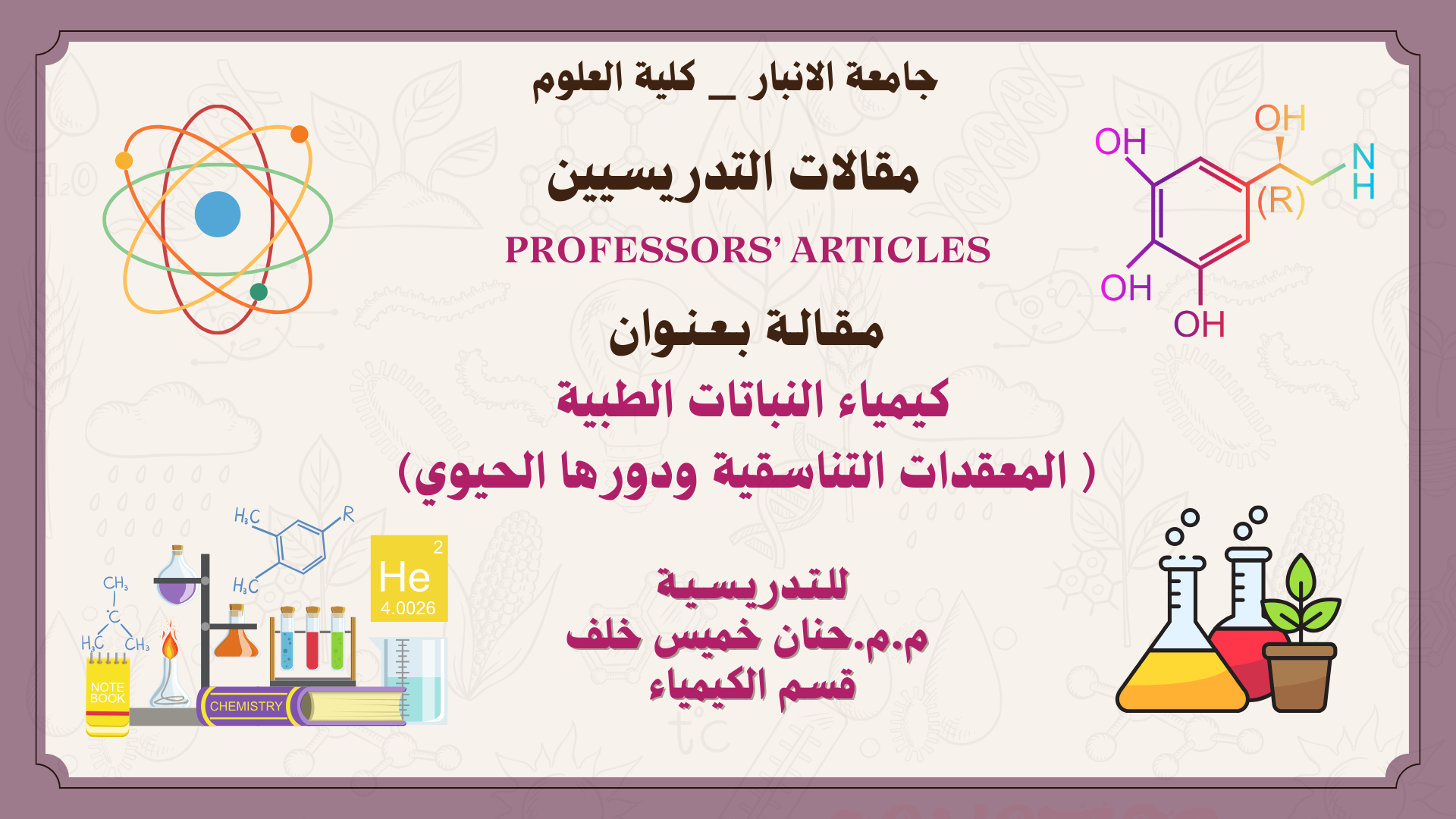Many plants contain active compounds that contribute effectively to metabolic and vital processes, either directly or through the formation of coordination complexes with transition metal elements such as iron, copper, silver, nickel, magnesium, and manganese, in addition to other elements that play a pivotal role in the vital functions of cells. The most prominent of these active compounds are flavonoids, alkaloids, terpenes, and polyphenols.
These compounds have diverse biological properties, acting as antioxidants, antibacterial, antimicrobial, and antiviral. They also play an important role in treating many diseases, enhancing mental abilities, and strengthening the immune system. These compounds are relatively safe, due to the few side effects associated with their use.
Coordination complexes are molecules that contain a metal center linked by chemical bonds with atoms, ions, or molecules that donate their electrons to the metal center. These complexes may be electrically neutral or carry a positive or negative charge. Transition metals play a pivotal role when linked to active functional groups in active compounds, forming coordination complexes that perform important biological functions inside living cells. The most prominent of these functions are:
1. Catalytic role: Coordination complexes contribute to the catalyst of specific biological reactions, such as the role of copper in oxidative enzymes that facilitate biological reactions.
2. Improved absorption: These complexes enhance the absorption of essential minerals such as iron and zinc in the body, improving their bio-efficiency.
3. Detoxification: Coordination complexes are used to remove toxic metals from the body when poisoning occurs, as the toxic metals are bound in the form of complexes that are excreted from the body.
4. Antibacterial properties: Some coordination complexes have antibacterial effects, making them effective in fighting infections and used as antibiotics.
5. Nutritional enhancement: Nutrient absorption is increased when they are in the form of coordination complexes compared to when they are in the form of salts. For example, iron in the form of a coordination complex is known to be absorbed more efficiently than when it is in the form of a salt.
These properties highlight the prominent role of coordination complexes in biological and medical fields, opening up broad prospects for their use in improving human health and enhancing vital processes.
Many scientific studies and research have shown the importance of the harmonious complexes formed by medicinal plants, which are currently considered to be highly valuable compounds. Natural compounds extracted from plants are preferred over synthetic chemical compounds in various fields, due to their effectiveness and safety. Medicinal plants are considered a rich source of these harmonious complexes, which play a vital role in promoting human health and supporting the body's vital functions.
Understanding the relationship between medicinal plants and the formation of coordination complexes is an essential step towards the discovery and development of innovative pharmaceutical compounds with high efficacy and fewer side effects. Accordingly, it is necessary to continue scientific research and applied and theoretical studies to deepen knowledge about these natural resources and further exploit their potential, which contributes to improving public health and supporting medical progress.
? REFERENCES
1- El-Lateef, H.M.A., et al., Recent overview of potent antioxidant activity of coordination compounds. Antioxidants, 2023. 12(2): p. 213.
2- Bernhardt, P.V. and G.A. Lawrance, Introduction to coordination chemistry. 2025: John Wiley & Sons.
3- Kostova, I., The role of complexes of biogenic metals in living organisms. Inorganics, 2023. 11(2): p. 56.
4- Edo, G.I., et al., Investigation of the metal complexes and bioactive compound formed by coordination of bioactive phytochemical from ginger (Zingiber officinale) extracts to metal ions. Food Chemistry Advances, 2023. 3: p. 100337.

